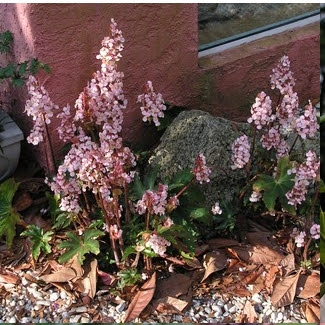The vine started growing at the end of August. We'd eaten a ton of watermelon in the previous weeks, and I figured that the seeds had sneaked into some finished compost I added to the bed, readying it for the abysmal failure that was to be my corn experiment. It set fruit during a cool spell at the beginning of September.
I figured it must be watermelon -- the leaves looked like watermelon, the rind looked like watermelon... The shape was not exactly watermelon, but I figured it was a chance cross from the grower's field.
Got tired of waiting today, and since the fruit had stopped growing and sounded hollow when I thumped it, I cut it open... Looks like Seminole Pumpkin/Squash, from seeds that must have lain there for six months, last time I bought some from Pauline's garden. Given the legendary toughness of the Seminole, it's totally possible that this is the fruit of squash we ate in the spring.
I have a bunch of small fruit now set. And lots of seeds.
I haven't cooked any of it yet. Even though the vine is trying to take over my garden, I think I'll put up with it for a while, especially if it tastes any good.
Update: We fixed it finally... more acorn squash than butternut. Very tasty. And, apparently, totally bug proof, as the vine continues its conquering of my vegetable bed. It's an ill-behaved vine, but a sharp knife keeps it in line... The vine roots readily.









































